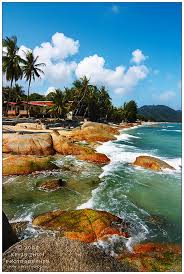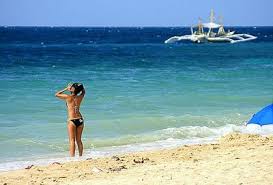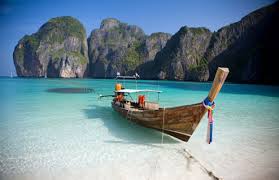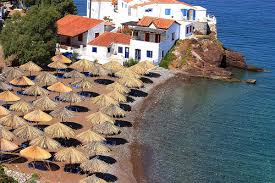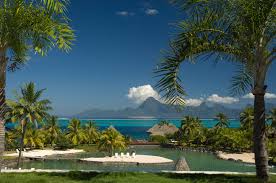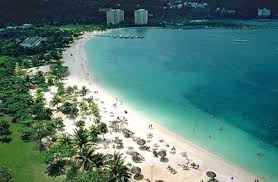There is a beautiful island in the north east Indonesian Papua called as Biak Numfor. There is a very potential area for tourism in the eastern area of Indonesia archipelagoes. Nowadays, a local government has effort to promoting the island as a tourist destination. The development for tourist destination has been start since the era of 1980s to 1990s.
Biak location at Lat 1° 0' 0S Long 136° 0' 0E. Cendrawasih bay, near northern coast of Papua province of Indonesia. Many parts of the island are off limits to visitors. The infrastructure of the island are fine, there is a suitable airport – Frans Kaisiepo Airport - that now has been developing for a large size of aircraft due to the planning to open a space satellite launcher facility (cooperation Indonesia and Russia). There is also a large Indonesian naval base. Biak is the largest island in its small archipelago, and has many atolls, reefs, and corals.
Other interest.
The water area of Biak is one of the choice destinations for visiting. There is a pristine white sandy beach and crystal water, a beautiful varied fish and corals. The tourist will diving and snorkeling to enjoy the underwater view.

In the eastern part of Biak there is the Padaido archipelago which comprise of approx. 30 islands both big and small. A recommended place within the archipelago is the small island of Ureb and Mansurbabo, both having a white sandy beaches and clear water, there is also a fantastic place called as Sarirea rocks. Sarirea rock also suitable for diving and snorkeling.
If you have a hobby of skydiving, there is a best place to do. The place is Bosnik island, located in the eastern coast of Biak. The other interest place is Korem, which the tourist can watch young men dive for pearls.
To reach the island at the archipelagoes it can use a small outrigger motorized boat that is an exciting sea-journey through beautiful island with shallow clear water.
Famous during Wartime
During the Second World War (Pacific theatre), the island is very famous, that is an important place for the US troop under General Douglas MacArthur for his strategy to beat a Japanese troop in pacific area, especially in Philippine (the strategy well known as a frog jump). Biak used by General MacArthur troop as a staging base.
During the Second World War (Pacific theatre), the island is very famous, that is an important place for the US troop under General Douglas MacArthur for his strategy to beat a Japanese troop in pacific area, especially in Philippine (the strategy well known as a frog jump). Biak used by General MacArthur troop as a staging base.
Fierce fighting occurred on this island. After the turn of events in the rest of New Guinea, the Japanese began fortifying the island unbeknownst to the Americans. On May 27, 1944, the US Army 41st Infantry Division landed on Biak and fierce fighting followed as most of the Japanese were entrenched in natural limestone caves and fortifications. These entrenched troops fought an excellent defense, delaying the reopening of Mokmer Drome.
A tank versus tank battle occurred on Biak, when Japanese Type 95 Ha Go tanks attempted to attack the beachhead. They were destroyed by US Army M4 Sherman tanks. Casualties on Biak were 435 Americans KIA and 2,360 WIA. The Japanese lost an estimated 6,125 KIA, with 460 POWs, and 360 Formosan POWs. After finally securing the island, American developed southern Biak into a large airbase and staging area.
Site of the American amphibious landing, there are some bits of landing craft and docks still visible. Today, the beach is popular for swimming and diving.
Japanese Cave (Goa Jepang)
There are so many interest place for visiting by a tourist, beside the beach area and the ocean for diving with a beautiful under water view. The other interested place is Goa Jepang (Japanese Cave) is the local name for a cave which used to be used as a defense fortress by Japanese soldiers. The Japanese discovered the three-kilometer-long cave in 1943. Its gate is located in Paray beach in Paray village, Biak city. Japanese soldiers entered the cave from Paray beach.
There are so many interest place for visiting by a tourist, beside the beach area and the ocean for diving with a beautiful under water view. The other interested place is Goa Jepang (Japanese Cave) is the local name for a cave which used to be used as a defense fortress by Japanese soldiers. The Japanese discovered the three-kilometer-long cave in 1943. Its gate is located in Paray beach in Paray village, Biak city. Japanese soldiers entered the cave from Paray beach.
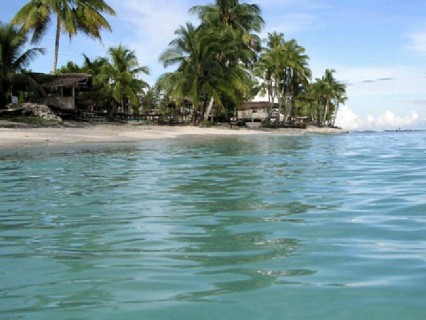
The soldiers occupied three large rooms built inside the cave. The Japanese soldiers managed to shoot down a U.S. plane from their hiding place. However, eventually the US army came to know where the Japanese soldiers were hiding. So in the early morning of July 7, 1944, the US Army attacked the cave. The cave was bombarded. The Americans also dropped drums of gasoline into the hideout and blasted them from the air, setting the cave into fire. The cave burned for several months. Some 3,000 Japanese soldiers were trapped and killed in the attack.
Flore and fauna.

Biak has a large area of tropical rain forest with a numerous type of flora. The forest also has a variety trees and other commercially important species plus the lush vegetation of mangrove swamps. The forest orchid is very specific species and has a unique color, The carnivorous pitcher plant Nepenthes insignis grows on Biak.
The fauna is very similar to Australian fauna such as the group of fowl like pigeon, cockatoo, "Nuri" bird and the reptile group such as snake, turtle and medium sized lizard. One endemic species to Biak island is the Blue-eyed Spotted Cuscus.





